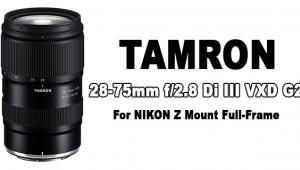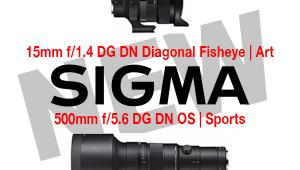Buying Smart; Lenses; Camera Brand Vs. After-Market
“Some OEM lens makers sell exactly the same item in the same configuration to more than one camera manufacturer.”
Ever hosted a dinner party where you served more food than could be prepared in your kitchen? Which option did you choose: Caterer? Friendly neighbor? Tub of take-out chicken from a drive-through window?
 |
Camera manufacturers face similar choices when they plan their accessory lens line-up. It’s impractical (nay, impossible) for even a top-tier manufacturer to make 100 percent of its accessory offerings, including lenses. Once they’ve decided to outsource (a practice embraced by Japanese industries decades ago) they can proceed along several different paths. All lead to the same result—a lens with their name on it, and no mention of the OEM, or “Original Equipment Manufacturer.”
In the world of lenses, a “caterer” is a company that produces its own stable of lenses and offers variations to camera manufacturers. We’ve all seen lenses that look suspiciously similar but bear different badges. Your suspicions may not be 100 percent correct, however—they are not necessarily 100 percent identical. In the same way that you might implore a caterer to alter a recipe—use less salt, or substitute fine Puligny-Montrachet for the cheap White Zinfandel—lenses that come out of the same factory with different names often perform differently because of small differences in design and components.
If the camera maker takes the “friendly neighbor” route, they give their manufacturing specifications to a third party who specializes in lens making—in the same way that you might hand grandma’s recipe and ingredient list for green bean casserole to your next-door neighbor collaborator. The camera guys may or may not supply some or all of the parts as well. Often they even send engineers along with the diagrams so that they’re assured that everything is done just so. It’s really a lot like you using your neighbor’s oven to roast a turkey when yours is busy cooking a ham—it’s your bird and your spices, and even though you may not be there to baste it, you can call it your own.
The neighbor—or lens company, in this case—builds the lenses to the camera maker’s specs and that’s that. Because the camera maker created the optical design and owns the specifications—and may have produced some of the component parts—they consider the lens their creation, as well they should. And they may use more than one fabrication source. It’s not a common practice, but there have been instances where camera makers switch OEMs for any of a number of reasons, including cost savings. The serial number often reveals the factory of origin, but you need a code book to decipher the meaning.
So-called “cost down” lenses are variations that appear after a lens has been on the market for several months—normally longer than one year. They have similar or even identical mechanical specifications, but are built with slightly less expensive materials. In most cases the internal parts are cheapened because it is determined that they were overbuilt in the first place. A gear that will endure five million revolutions might be replaced with one that will survive half a million—at the savings of a few cents. Or the rear mount may be switched from steel to plastic. Sounds like penny-pinching, but add all of the so-called “parts modifications” together and multiply that by 200,000 lenses and you can see that the savings can be significant.
Sometimes the camera manufacturer is merely trying to plug a hole in their lens line-up and isn’t anticipating any real return on the investment. That’s when they follow the “carryout chicken” analogy. Just as you expected, they grab a package of precooked poultry with little or no influence over how the pullet was prepared. Some OEM lens makers sell exactly the same item in the same configuration to more than one camera manufacturer. The only difference is the box, brand name, and serial number sequence.
And here’s something you probably never thought about—most of what is said here about D-SLR accessory lenses also applies to point-and-shoot camera lenses. Did you actually think that every compact camera maker produces their own zoom lenses? And frankly speaking, we’re better off because they don’t. Manufacturers who specialize in lens making can produce a consistently better product at a lower price, giving us two things we all appreciate—cost savings and sharp pictures.
So what does this mean to you, the D-SLR shooter who’s torn between buying a lens that wears the same name badge that your camera wears or one that says Phoenix, Quantaray, Sigma, Tamron, or Tokina?
In many instances and for many applications, you will not see an overall difference in your images. The lens manufacturers who have survived the fussy, hard-to-please photographic market all produce top-quality products. There could be other performance issues—focus speed, physical fit and feel, etc. But when you compare the centers of the images at 100 percent they will be more alike than different. Let me qualify that—and this is very important: this assertion only applies to lenses that are exactly the same in every way and similar in price. You cannot expect a $119 70-210mm zoom lens to perform like an Image Stabilized f/2.8 Canon L-series lens that costs 10 times as much. Nor should you.
If we’re talking about a lens that you’ll be using every day (or at least every week) don’t spare the expense—go with the top-tier choice. But if it’s a 400mm telephoto that you’ll uncrate once or twice a year when you hit a NASCAR event, you may be better off if you skimp on this accessory by buying the low-cost version and throwing the bucks you save toward a different lens that you’ll use more often.
And just remember, before you trash the guy who shoots with a Brand X lens, he may be perfectly happy with the results he’s getting—and his lens may have come out of the same factory that your high-priced glitzy glass did. Who knows? He may have used the money he saved to buy a second camera body.
You can read Jon Sienkiewicz’s Blog at: www.shutterbug.com.

















































